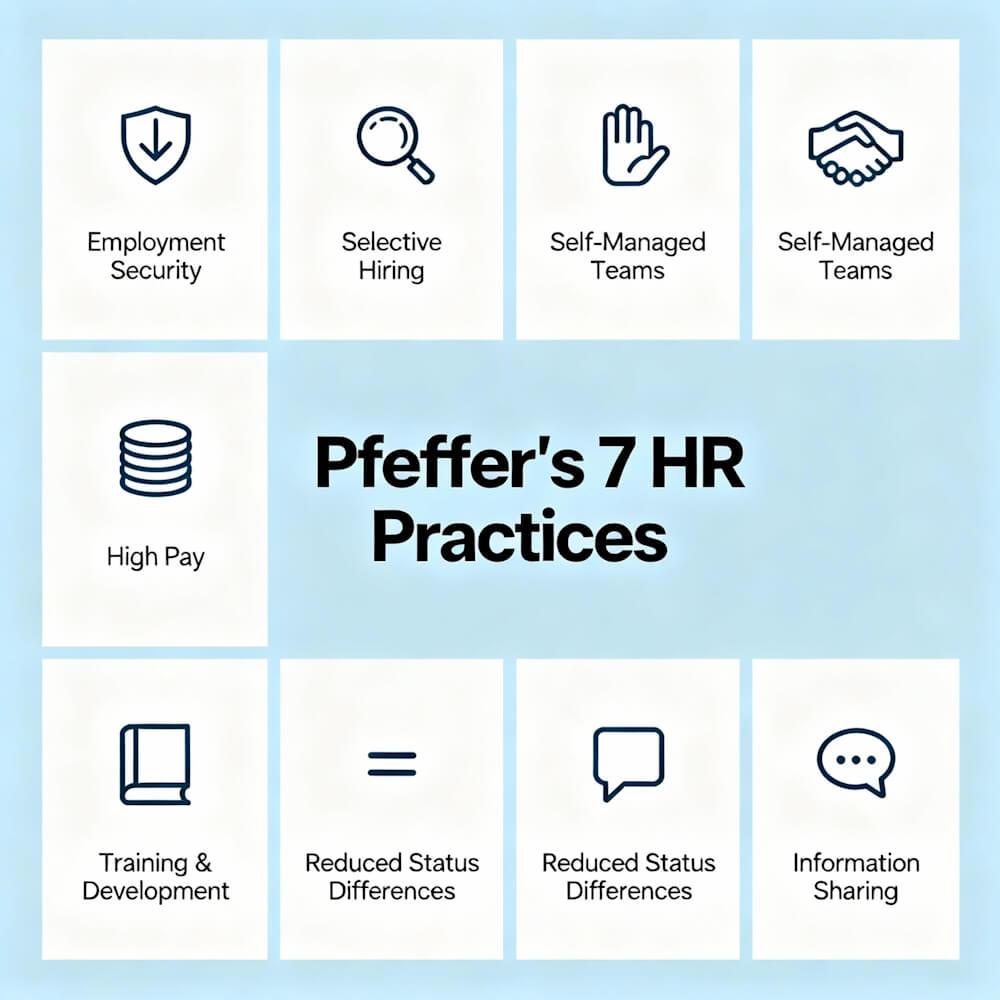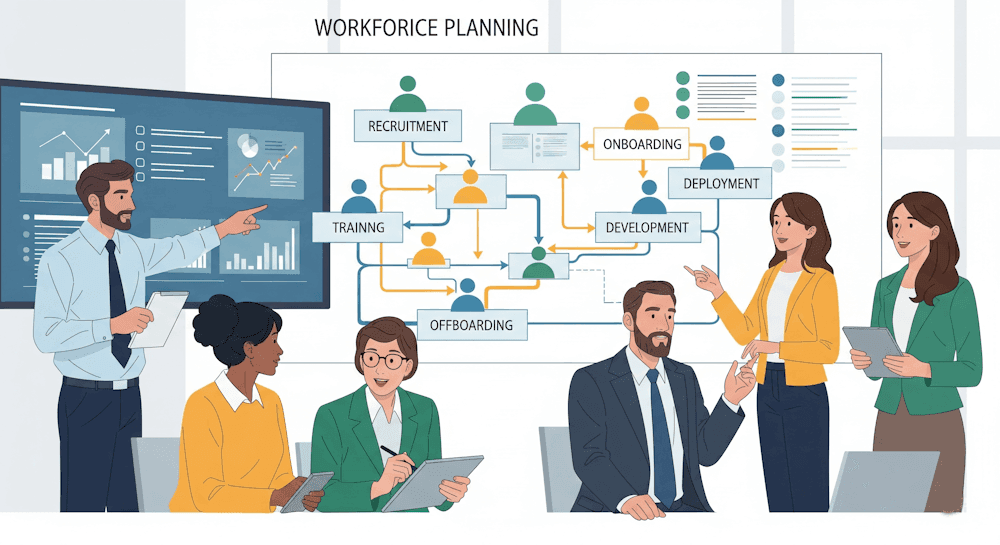Forecasting Demand of Human Resources
Forecasting the demand of human resource needs is the first and most important step in any human resource planning process. This step results in an estimation of the staffing requirement of an organisation, for both the short and long term, and is therefore the foundation of the planning activity. Here, both the quantitative as well as qualitative aspects of human resource requirements are dealt with.
The demand for human resources in an organisation is subject to vary from time to time, depending upon both external and internal factors.
- External factors include competition, economic and political climate, technological changes, government policy, etc.
- Internal factors include growth and expansion, design and structural changes, management philosophy, change in leadership style, employees’ resignation, retirement, termination, death, etc.
Therefore, while forecasting future demand for human resources in the organisation, these factors need to be taken into consideration.
Why Forecasting Human Resources is Essential
Forecasting demand for human resources is essential to an organization because it helps:
- Quantify the number of jobs required at a given time for producing a given number of goods, or offering a given amount of services
- Ascertain the right mix of the staff needed at different points of time in the future
- Ensure adequate availability of people with varying qualifications and skills as and when required in the organisation
- Assess appropriate staffing levels in different parts of the organisation to avoid unnecessary costs
- Monitor compliance with legal requirements about the reservation of jobs
How to Forecast Requirements for Human Resources
There are various techniques to forecast HR demands, ranging from simple to sophisticated ones. These include:
1. Management Judgement
This technique is very simple and time-saving. It uses either a “bottom-up” or a “top-down” approach:
- In the bottom-up approach, line managers prepare departmental requirements for human resources and submit them to the top managers.
- In the top-down approach, top managers prepare the departmental forecasts which are reviewed with the departmental heads.
Limitation: This method suffers from subjectivity and lacks accuracy. It is suitable for small firms or those without a sufficient database.
2. Work-Study Method
Used when job methods do not change frequently and work can be measured. Inspired by Frederick Winslow Taylor’s Scientific Management, this involves:
- Time and motion studies to set standards
- Based on those standards, the number of workers required to do standard work is calculated
3. Ratio-Trend Analysis
One of the quickest forecasting techniques.
- Based on past ratios, such as output per worker or sales volume per salesperson
- Forecasts are made using these trends, adjusting for expected changes
- Calculates HR demand by establishing a ratio between two related variables
4. Delphi Technique
A judgmental forecasting method that avoids face-to-face interaction.
Steps involved:
- HR planning members estimate HR needs via questionnaires
- Each completes the first questionnaire anonymously
- Responses are compiled and shared
- Members revise estimates after reviewing others’ opinions
- Steps repeat until consensus is reached
Advantages:
- Avoids groupthink and external influence
- Useful for global companies
Limitations:
- Time-consuming
- May not generate diverse ideas like live group discussions do
5. Markov Flow Model
A simple flow model:
- Determines HR demand periods
- Estimates probability of HR flow from one job category to another using past trends
Limitations:
- Relies heavily on past data
- May not be reliable during turbulent or abnormal changes
- Individual accuracy is sacrificed for group accuracy
6. Mathematical Models
These models express the relationship between:
- Independent variables: e.g., production, sales
- Dependent variables: e.g., number of workers required
Factors Affecting Demand Forecasting
Several internal and external factors impact the HR demand forecasting process:
1. Economic Factors
Forecasts must consider:
- Per capita income
- Wage and salary expectations
- Raw material cost and pricing
- Inflation
- Fiscal policies and trade liberalisation
2. Social Factors
These include:
- Employee expectations on wages, working conditions
- Government labour regulations
- Political influences
- Public opinions
3. Demographic Factors
Key influences:
- Youth availability
- Women in the workforce
- Sex ratio
- Literacy and education levels
- Professional training facilities
4. Competition
Competitor strategies around:
- Product quality
- Advertising
- Pricing
- Distribution
These can lead to hiring needs, e.g., for better R&D teams to improve product design.
5. Technological Factors
Technology drives demand for:
- Upgraded skill sets
- Lower or higher headcounts depending on automation
- Technology forecasting becomes essential for anticipating future HR needs
6. Growth and Expansion
- Growth via product diversification or increased capacity
- Expansion via mergers, acquisitions, or global ventures
These require a well-planned, qualified workforce.
7. Management Philosophy / Leadership
- Public-sector firms may adopt a liberal staffing policy
- Private firms aim for optimal staffing based on efficiency
Top management’s approach will heavily shape future HR policies.
8. Innovative Management Practices
- Competitive workplaces must adapt to trends like emotional intelligence, continuous improvement, and customer relationship management
- These innovations influence future hiring strategies
Managerial Dilemma in Forecasting
Common questions include:
“Why forecast when the future is uncertain? Why do HR planning if today's forecast won’t hold long-term?”
Answer: HR forecasting is not about predicting exact numbers. It’s about recognizing trends to prepare proactively.
Also, HR planning is not the same as annual budgeting. The latter often results in overestimated numbers by managers, lacking the precision and depth that long-term planning offers.
Problems in Demand Forecasting
Trying to predict how many people an organization might need in the future isn’t always as straightforward as it seems. Even if everything looks good on paper, real-world problems often get in the way. Here are some common issues HR teams run into:
1. Social Pressures
Sometimes, even well-planned projects get delayed or completely shelved—not because of money or logistics, but due to public or social pushback. For example, a factory might get halted because it’s seen as harmful to the environment. Or a product might get rejected by the public due to cultural or religious reasons. A classic case? Certain food items with beef fat didn’t go over well in India. All of this affects hiring—plans for bringing people on board can suddenly become pointless.
2. Fast-Moving Technology
Technology moves fast—sometimes too fast. A company might plan its workforce around a certain process or system, but by the time things are actually ready to go, a newer, better tech might’ve taken over. That could mean the jobs you thought you needed don’t make sense anymore. On the flip side, there may now be a demand for totally different skill sets that weren’t even on your radar earlier. HR teams need to stay alert and be ready to shift gears quickly.
3. Political Shake-Ups
Politics can really mess with business plans. Think about when the USSR collapsed—Indian companies that were exporting there suddenly lost that whole market. Or during the Gulf War, construction companies with big projects in that region had to scramble. Stuff like this can force businesses to scale back, shut down certain operations, or rethink everything—including hiring plans. Basically, forecasts go out the window when politics take a sudden turn.
4. Economic Curveballs
The economy can throw some serious surprises. One big example was in India during the early '90s. Economic reforms changed everything. Companies that had planned to manufacture everything in-house realized it wasn’t practical anymore. Suddenly, importing parts or assembling became the smarter option. That kind of change doesn’t just affect operations—it flips the hiring plan too. The kind of workers needed changes, and the whole strategy has to be updated.
5. People Leaving Unexpectedly
One of the toughest things to predict? When people will leave. Sure, you can look at past trends, but real life doesn’t always follow patterns. Someone might quit because they found a better job, got burned out, decided to move, or just wanted a change. And it’s not the same across roles—some positions see more turnover than others. So even if the data says one thing, HR teams need to be ready for surprises. Forecasting based only on past numbers isn’t enough anymore.
Read the related article -







